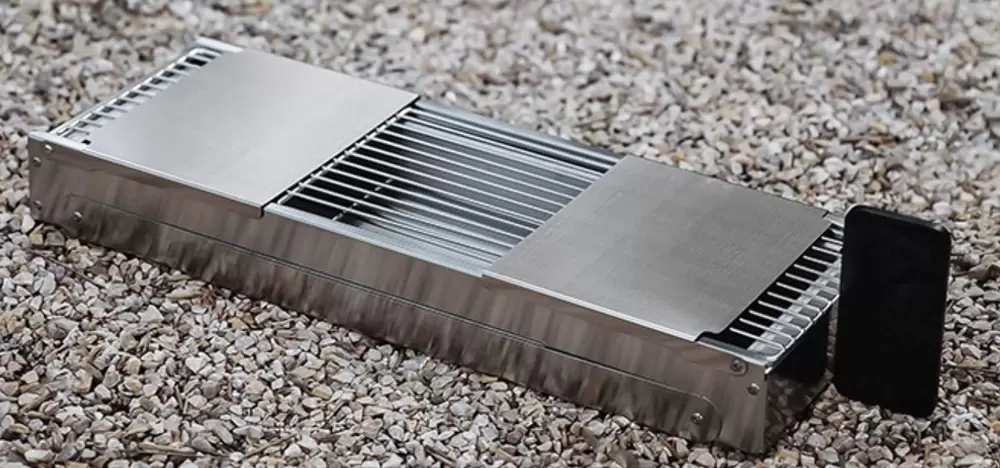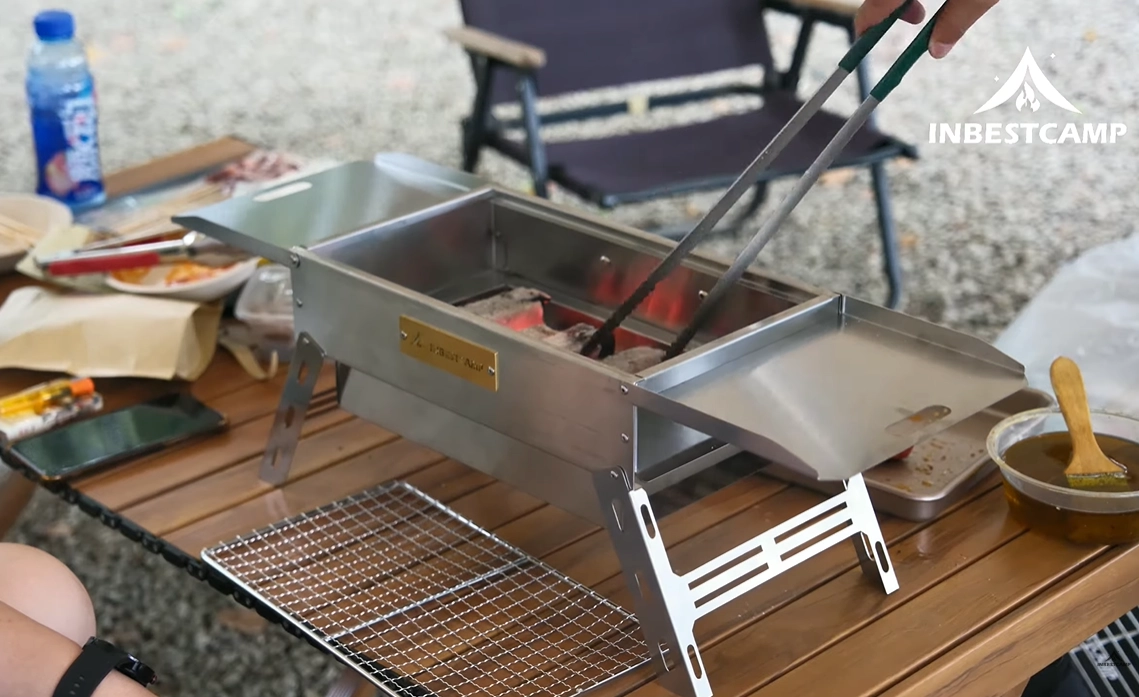Find out more about our news >
How to Ensure Consistent Cooking Performance in Outdoor Grills
Introduction: Why Consistency Matters in Outdoor Grilling
There’s nothing more frustrating than carefully preparing a meal outdoors, only to find your food unevenly cooked or overdone in spots. Outdoor grilling is an art and a science: achieving consistent cooking performance requires more than just turning on the burners. Whether you’re cooking for a family camping trip, a backyard barbecue, or a gourmet outdoor pizza session, knowing how to control heat, fuel, and airflow can make the difference between a perfect dish and a disappointing one.
Brands like Tuoshenghe have spent over 15 years mastering the technology and engineering behind high-performance outdoor grills. Their patented combustion systems, precision-engineered materials, and intelligent manufacturing processes are designed specifically to eliminate common grilling problems and deliver predictable, professional-level results every time.
In this guide, we’ll dive directly into actionable strategies to ensure your outdoor grill performs consistently—covering heat management, fuel optimization, grill maintenance, and advanced techniques for perfect outdoor cooking.
Ensuring Stable Heat Management
Consistent cooking begins with reliable heat management. Even minor temperature fluctuations can lead to unevenly cooked food, burnt edges, or undercooked centers. INBESTCAMP grills are engineered to minimize heat inconsistency:
Patented Combustion Technology: INBESTCAMP’s grills utilize airflow-optimized chambers and tent furnace structures to maintain even flame distribution, reducing hotspots.
Precision Burner Control: Multi-function barbecue grills feature adjustable burners and vents that allow fine-tuning for different cooking zones.
High Thermal Conductivity Materials: Tuoshenghe uses laser-cut steel with precise welding to ensure heat is efficiently retained and distributed across the grill surface.
Pro Tip: Always preheat your grill for at least 10–15 minutes. This allows all metal surfaces to reach equilibrium and prevents sudden heat spikes when food is added.
Fuel and Combustion Optimization
The choice and management of fuel directly impact cooking consistency:
Charcoal or Wood Pellets: Use high-grade, low-moisture charcoal or pellets for stable combustion. Avoid cheap lump charcoal which burns unevenly.
Gas Grills: Ensure your propane or natural gas supply is steady. Check hoses and regulators for leaks or blockages before cooking.
Fuel Placement: Position fuel evenly across burners or coals for uniform heat zones. Tuoshenghe’s vertical manufacturing process ensures fuel chambers are engineered for optimal airflow.
Table 1: Fuel Management Tips
Fuel Type | Common Issue | Recommended Solution |
Charcoal | Hot/Cold Spots | Spread evenly, preheat 15 min |
Wood | Uneven Smoke | Use pellets or small chunks, maintain airflow |
Gas | Flame Fluctuation | Inspect hoses, use consistent pressure |

Grill Surface and Accessory Considerations
Even heat distribution is closely tied to the design of the cooking surface:
Material Thickness: Thicker grill grates retain heat longer and reduce temperature fluctuations.
Removable Plates and Grates: INBESTCAMP grills feature modular grates for cleaning and optimized airflow.
Heat Diffusers: Installing a diffuser plate helps stabilize temperature across the cooking surface.
Pro Tip: Rotate food strategically. On larger grills, periodically switch items between hot and cooler zones to achieve uniform cooking without burning.
Maintenance and Cleaning for Consistent Performance
Regular maintenance is crucial. Residue, grease buildup, and corrosion can severely impact heat consistency:
1. Clean Grates After Every Use: Use a grill brush or scraper to remove carbonized food debris.
2. Inspect Burners and Fuel Chambers: For gas grills, check for blockages; for charcoal grills, remove ash buildup to maintain airflow.
3. Protect Against Rust: Store grills in dry conditions or use protective covers. Tuoshenghe products often incorporate corrosion-resistant coatings for extended lifespan.
4. Season Grates: Apply a thin layer of oil to cast iron or steel grates to maintain non-stick properties and consistent heat transfer.
Chart Suggestion: A maintenance schedule chart showing daily, weekly, and monthly tasks can visually guide users for optimal grill care.
Leveraging Technology for Precision Cooking
Modern outdoor grills now incorporate smart features:
Temperature Sensors: INBESTCAMP’s grills can include integrated thermometers for real-time heat monitoring.
Adjustable Ventilation: Fine-tune oxygen flow to control combustion efficiency.
Modular Cooking Zones: Enable simultaneous cooking at different temperatures for varied dishes.
Pro Tip: Combine temperature monitoring with timer management for perfect steak, pizza, or roasted vegetables consistently.
Weather Adaptation Strategies
Outdoor conditions can drastically affect cooking:
Wind Shields: Use grill covers or built-in wind guards to prevent flame disruption.
Temperature Compensation: On cold or windy days, increase preheating time and adjust fuel load accordingly.
Humidity Management: High humidity slows heat penetration. Keep a small airflow opening to maintain proper combustion.
Common Cooking Challenges and Solutions
1. Uneven Browning
Rotate food and ensure even fuel placement.
Use heat diffusers to stabilize zones.
2. Flames Too High or Too Low
Adjust vents and burners gradually; do not overcompensate.
For charcoal grills, add small fuel increments instead of large amounts.
3. Smoke Control Issues
INBESTCAMP grills use airflow-optimized chambers to reduce smoke surges.
Ensure the grill lid is properly sealed to regulate combustion gases.
FAQ Section
Q1: How long should I preheat my outdoor grill for consistent results?
A: At least 10–15 minutes for gas grills, 15–20 minutes for charcoal or wood pellet grills. This ensures all surfaces reach uniform temperature.
Q2: Can I use any type of charcoal in my INBESTCAMP grill?
A: High-quality, low-moisture charcoal is recommended. Avoid lump charcoal with uneven sizes.
Q3: How often should I inspect my grill?
A: After every cooking session, clean grates. Monthly, inspect burners, fuel chambers, and check for corrosion.
Q4: Can weather really affect cooking performance?
A: Yes. Wind, temperature, and humidity can impact heat stability. Using shields and adjusting fuel load helps maintain consistent cooking.
Tuoshenghe Advantages
Choosing INBESTCAMP grills guarantees a consistent cooking experience:
15+ Years of R&D: Deep expertise in outdoor cooking equipment.
Patented Innovations: 12 patents in combustion and tent furnace technology.
Global Certification Compliance: CE, CSA, RoHS, EU REACH.
Vertical Manufacturing: Laser cutting → welding → quality inspection ensures precise performance.
Global Service Network: Tri-hub stocks in LA, Hamburg, and Panama; 24h real-time customer support.
Conclusion
Achieving consistent cooking performance in outdoor grills requires careful attention to heat management, fuel optimization, maintenance, and environmental adaptation. Leveraging the technology, patented designs, and manufacturing excellence of Tuoshenghe ensures professional-level results every time. Whether grilling pizzas, steaks, or vegetables, these strategies make outdoor cooking predictable, reliable, and enjoyable.




 RELATED MAGAZINE
RELATED MAGAZINE 











